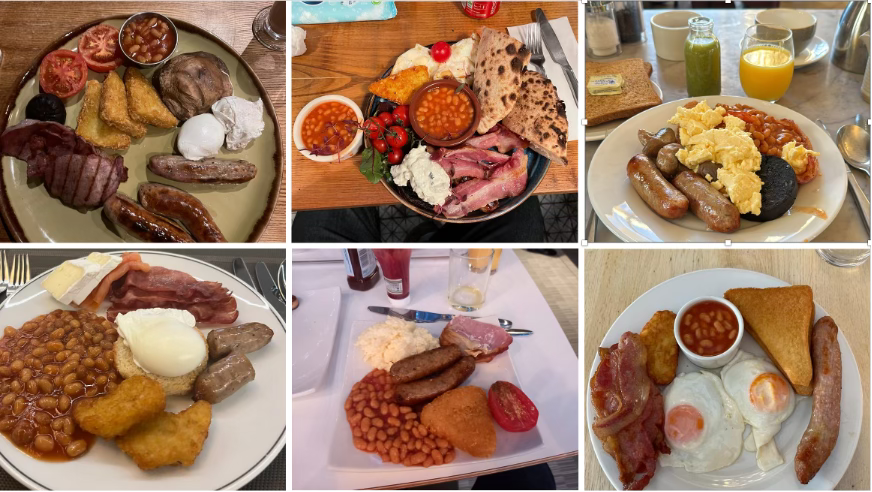You’re reading CX Stories, a newsletter about customer experience innovation. If you want to join the 4000+ lovely people who receive it every month, just enter your email address below.
What’s the most controversial opinion you hold?
I’ll tell you what it probably is. It’s how you think a ‘Full English’ breakfast should be laid out. If you don’t believe me, next time you’re with a group of friends, carefully explain what you think should go where and – crucially – whether you think the beans should be carefully contained in a receptacle or left to roam free, engulfing the other items as they do.

Wading into the argument last week was a well-known hotel chain, releasing a new ‘concept plate’ with an inbuilt – and cleverly branded – bean barrier. Apparently, according to their study, a whopping 60% of people like to stop their beans mixing with other ingredients.
“And while the English Breakfast is a staple, for some, the experience can be spoiled by simply having the beans touch the bacon. And nobody wants that.”
Ollie Bloomfield, Head of Breakfast
I suspect I know what you’re thinking. It’s been a long and busy year, it’s nearly Christmas and John is either a) exhausted or b) has run out of ideas for articles. But stay with me! Because I think this is an example of brilliant customer-led innovation.
Whilst a survey can help you confirm if people think what you suspect, true trailblazing insight can only come from immersing in your customers’ lives, observing them, or being them, using your own products to experience what life is really like for one of your customers.
It sounds very easy to say, but it’s very hard to do. As soon as you spend more than a few weeks working for an organisation, you start succumbing to The Curse of Knowledge, a behavioural bias that says once you know something, it’s almost impossible to remember what it was like to not know it. And because you become familiar with the product, the service, the processes, and the jargon, you lose the ability to see the world from the outside-in, from where your customers stand.
This was a huge challenge for me when I was at HSBC. After twelve years of talking overdrafts, mortgages, and APRs, it was hard to remember life not knowing those things intricately. But this was made harder by the fact I had a ‘staff’ account, meaning that whenever I phoned up, I was treated differently as a result.
And it happens all the time. A few weeks ago, I told the story of an Uber driver who had never used Uber. That same week, trying to sort a problem with my Broadband, the customer service agent told me he’d never used the app I was using, only ‘the internal version we have’.
But when you can change perspective and see the world from the outside-in, you start to see all the ways you can be useful to customers, and what gets in the way.
I learnt this when working with a big supermarket client who wanted to make more of their deli counters. They had real butchers rather than just normal colleagues serving the meat, but didn’t feel they were famous enough for it. So I went to mystery shop their Wycombe store.
Walking through the door, I was greeted with a huge tower of Celebrations. Next to that, a pyramid of Pringles. And there, in the very far distance, behind this avalanche of unhealthy snacks, was a man with a 4ft blade sawing a carcass. It was one of the most impressive things I’ve ever seen in a shop – but hidden behind a load of £5.99 White Lightening.
This is why whenever CityMapper plans to open up in a new city, they take a cross-section of their team and go and live in that city for a month, moving AirBnB every two days so they get to experience what life is like really travelling through that city, not just what the data tells them the travel should be like.
It’s why Chiltern Railways expects their senior managers to live somewhere along the Chiltern Railways route, so they have to use their own product every day, and wear their name badge whilst they do. (Alan Riley, former Director of Customer Services there, said they did focus groups and ‘Meet the Manager’ events, but ‘the more formal the forum, the less I learn’).
And it’s why the founder of Riverfood, Guy Singh-Watson, invited himself to about 40 customers’ homes and cooked with them, to learn how they really used the product, to ‘get the feeling of it’, as he put it.
So as we head in 2024, maybe one resolution could be to use your own product more. And the next time you sit down for a full English, take a good look at what other people do with their food. You might learn more about them than you realise.
(P.S. This article is thanks in large part to a post by the brilliant Iain Montgomery which caught my eye. It should be said it’s knowing people like Iain that make me mourn what Twitter was, and all the great people I’ve met through it).
Thanks for reading this article, I really hope you enjoyed it. You can subscribe to my monthly newsletter below, and find me in tweet form @johnjsills, in picture form on Instagram @johnjsills, or in work mode at The Foundation or on LinkedIn.
